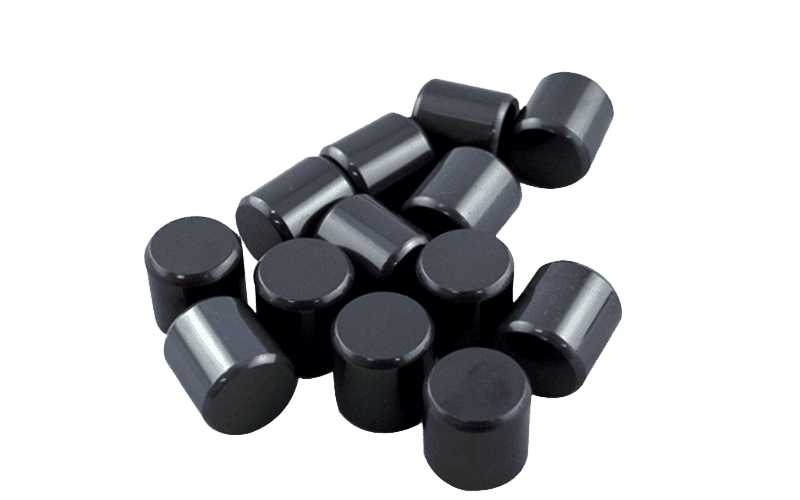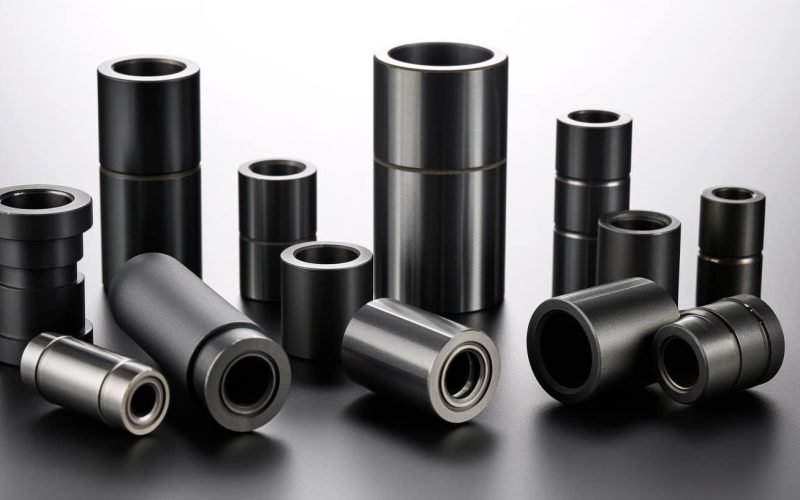Table of Contents
Catchy Introduction: Why Wear-Resistant Ceramics Matter
Did you know? Wear-resistant ceramics can make mining equipment last 10 times longer than steel, saving companies millions! These super-tough materials are like superheroes for machines, fighting off wear and tear in rough places. Whether it’s a mining chute or a car engine, wear-resistant ceramics keep things running smoothly. So, why should you care? Because they save money, make machines last longer, and work in crazy conditions!
- Super Durable: Last 3-10 times longer than metal parts.
- Big Savings: Fewer repairs mean less downtime.
- Works Everywhere: From mines to spaceships, they’re unstoppable!
In this guide, we’ll explore what makes wear-resistant ceramics so special, how they’re used, and why they’re a game-changer for industries like yours. Let’s dive in!
What Are They, Anyway?
Wear-resistant ceramics are tough materials built to handle scratching, grinding, and harsh environments. Unlike regular ceramics used for cups or tiles, these are made for heavy-duty jobs. They’re super hard, don’t wear out easily, and can take extreme heat or chemicals. For example, in mining, they protect equipment from rocks and dirt, saving time and money.
Why Are They So Cool?
These ceramics are like armor for machines. They’re used in places where metal would break or wear out fast. At Eshino Precision, we craft these ceramics to help industries like automotive, aerospace, and oil and gas. Curious? Let’s look at what makes them tick!
What are Wear-Resistant Ceramics?
Wear-resistant ceramics are special materials designed to stay strong in tough spots. Imagine a superhero shield that protects machines from getting scratched or broken. Unlike the ceramics in your kitchen, these are built for extreme jobs, like keeping mining equipment or car parts working for years. They’re super important because they make machines last longer and save companies tons of money.
How Are They Different?
Regular ceramics, like plates or vases, are made for looks or simple uses. But wear-resistant ceramics are engineered for strength. They’re harder, tougher, and can handle heat and chemicals. For example, a ceramic seal in a pump can work in harsh oil and gas conditions without breaking, unlike metal that might rust or wear out.
Why Do Industries Love Them?
Industries like mining, automotive, and aerospace use these ceramics because they’re reliable. “Wear-resistant ceramics are critical for extending equipment life in abrasive environments, reducing downtime by up to 40% in mining applications,” says Dr. Jane Mitchell, a materials scientist at Saint-Gobain Ceramics. At Eshino Precision, we make parts like ceramic seals and tubes that keep machines running smoothly. They’re like the unsung heroes of factories!
Where Are They Used?
You’ll find wear-resistant ceramics in all kinds of places. They protect mining chutes from rocks, make car engines run better, and even help spaceships handle heat. They’re also used in medical devices, like artificial joints, because they’re so tough and safe. Want to learn more about their uses? Check out our guide on advanced ceramics applications.
Types of Wear-Resistant Ceramics
Not all wear-resistant ceramics are the same. Each type has its own superpowers, making it perfect for different jobs. Here’s a quick look at the main types you should know about.
Alumina: The Affordable Hero
Alumina is like the budget-friendly superhero. It’s super hard and great for general wear resistance. You’ll see it in mining equipment or factory tools because it’s tough and doesn’t cost a fortune. It’s a go-to choice for many industries.
Silicon Carbide: The Heat Champion
Silicon Carbide is extra hard and loves heat. It’s perfect for places with high temperatures, like aerospace turbines or oil drilling equipment. It’s a bit pricier, but its performance is unbeatable.
Silicon Nitride: The Tough One
Silicon Nitride is strong and can handle shocks, like sudden temperature changes. It’s great for car engines or moving parts because it doesn’t crack easily. Learn more in our Silicon Nitride guide.
Zirconia: The Impact Fighter
Zirconia is awesome for places with lots of banging or impacts. It’s super tough and used in things like pump plungers or cutting tools. Check out our Zirconia benefits guide.
Others: Boron Carbide and Composites
Boron Carbide is one of the hardest materials, used in things like armor. Composites, like Alumina-Zirconia, mix the best of both worlds for extra strength. Want to compare? See our Zirconia vs. Alumina guide.
Which is best? It depends! Silicon Carbide rocks for heat, Zirconia for impacts, and Alumina for saving money. Need help choosing? Contact Eshino Precision!

Silicon Carbide Tube
Handles extreme heat in aerospace

Zirconia Ceramic Seal
Tough against impacts in pumps.
Key Properties of Wear-Resistant Ceramics
Wear-resistant ceramics are awesome because they have special traits that make them perfect for tough jobs. Let’s break down what makes them so great.
Super Hardness
Hardness means they don’t get scratched or worn out easily. Think of them like a diamond that laughs at scratches! This makes them great for things like ceramic cutting tools. Here’s how hard they are:
| Ceramic Material | Vickers Hardness (GPa) |
|---|---|
| Alumina | 15-20 |
| Silicon Carbide | 24.5-29.4 |
| Silicon Nitride | 12-20 |
| Zirconia | 12-15 |
Toughness and More
Toughness means they don’t break easily, even if something hits them. They’re also great at handling heat and resisting chemicals, which is why they’re used in oil and gas applications. For example, Silicon Nitride rods can take shocks without cracking.
Why These Traits Matter
These properties make wear-resistant ceramics perfect for harsh environments. They keep machines running longer and save money on repairs. Want to dive deeper? Read our guide on advanced ceramic properties.
What’s the difference? Unlike regular ceramics, these are built for extreme toughness, not just looks. They’re the heavy-duty version of ceramics!
Applications of Wear-Resistant Ceramics
Wear-resistant ceramics are like superheroes in tons of industries because they’re so tough! They protect machines and parts from breaking down in rough conditions, like when rocks bash against mining equipment or when car engines get super hot. Let’s check out where these amazing materials are used and why they’re such a big deal.
Mining: Protecting Heavy Equipment
In mining, machines face tons of rocks and dirt that can wear them out fast. Wear-resistant ceramics are used as liners in chutes, hoppers, and grinding tools to keep them safe. For example, alumina ceramic plates can last up to 10 times longer than steel, saving companies from constant repairs. This means less downtime and more work getting done! Learn more about ceramics in tough jobs in our maintenance cost guide.
Manufacturing: Making Tools Last
Factories use wear-resistant ceramics for cutting tools, molds, and dies because they stay sharp and strong. “Ceramic cutting tools can boost precision and last longer than metal, improving factory output by 20%,” says Dr. Mark Thompson, a manufacturing expert at Precision Ceramics. Our ceramic cutting tools help make products faster and better, from car parts to electronics.
Automotive and Aerospace: Boosting Performance
In cars, wear-resistant ceramics make bearings and seals that reduce friction, helping engines run smoothly and save fuel. In airplanes, they’re used in turbine parts and heat shields because they handle crazy heat. Check out how automotive ceramics are changing the game. At Eshino Precision, we make Silicon Nitride bushings for these high-tech uses.
Other Cool Uses
Wear-resistant ceramics also shine in energy and medical fields. They’re in pumps and valves for oil and gas, handling harsh chemicals without breaking. In medicine, they make artificial joints because they’re safe and super durable. Want to know more? See our medical ceramics guide. Which industries use them most? Mining, automotive, and aerospace are the top ones!
Advantages of Wear-Resistant Ceramics
Why pick wear-resistant ceramics over metals or plastics? Because they’re way better in tough situations! They last longer, save money, and work in places where other materials would fail. Here’s why they’re so awesome.
They Last Forever (Almost!)
Wear-resistant ceramics can last 3-5 times longer than metal parts, and in some cases, up to 10 times longer! For example, a ceramic liner in a mining chute can keep going for years while steel might need replacing in months. This means machines keep running without stopping for fixes. How long do they last? It depends, but often a decade or more in tough jobs!
Save Money on Repairs
Because they last so long, wear-resistant ceramics cut down on repair costs and downtime. Imagine a factory that doesn’t have to stop every few weeks to fix worn-out parts—that’s what ceramics do! Our guide on reducing maintenance costs explains how ceramics save big bucks.
Handle Extreme Conditions
These ceramics laugh at high heat, harsh chemicals, and rough environments. They’re perfect for oil drilling or aerospace, where temperatures can soar. For instance, Silicon Carbide tubes can handle heat that would melt metal. Learn more in our high-temperature resistance guide.
Light and Efficient
Some wear-resistant ceramics are lighter than metals, making machines more efficient. In cars, lighter parts mean better fuel economy. Our lightweight ceramics guide shows how they boost performance.

Silicon Nitride Bearing
Reduces friction in car engines.

Zirconia Ceramic Plunger
Tough for high-pressure pumps.
Choosing the Right Wear-Resistant Ceramic
With so many wear-resistant ceramics, how do you pick the right one? It’s like choosing the best superhero for a mission—it depends on the job! Here are the key things to think about.
What Kind of Wear?
Different ceramics handle different types of wear. If parts slide against each other, like in a pump, Silicon Carbide is great because it’s super hard. For impacts, like in a crusher, Zirconia is better because it’s tough. Our guide on choosing ceramics can help.
How Hot Is It?
Temperature matters! For super-hot places, like aerospace turbines, Silicon Carbide is the champ. For cooler jobs, Alumina works fine and saves money. Check out our high-temperature guide for more.
Any Harsh Chemicals?
If your machine deals with acids or other chemicals, pick a ceramic that fights corrosion. Most wear-resistant ceramics, like those from Eshino Precision, resist chemicals well. See our corrosion resistance guide.
What’s the Budget?
Alumina is the cheapest, making it great for big projects. Silicon Carbide costs more but performs better in extreme conditions. Are they expensive? They might cost more upfront, but they save money over time by lasting longer. Need help? Contact Eshino Precision for expert advice!
Manufacturing Processes for Wear-Resistant Ceramics
Making wear-resistant ceramics is like baking a super-strong cake—it takes special steps to get it just right. These ceramics are made with high-tech processes to ensure they’re tough and reliable. Here’s how it works.
Step 1: Mixing Powders
Step 2: Shaping the Parts
Step 3: Heating It Up
The shaped parts are heated in a super-hot oven called a kiln. This process, called sintering, makes the ceramic super dense and strong. For some ceramics, like Silicon Carbide, special methods like hot pressing are used. How are they made? It’s all about powders, shaping, and heat!
Step 4: Polishing and Finishing
Finally, the parts are polished to be smooth and exact. This is important for things like ceramic seals that need to fit perfectly. At Eshino Precision, we make sure every part is top-notch. Want to know more? Check our ceramic machining guide.
Recent Advances in Wear-Resistant Ceramics
Wear-resistant ceramics are getting even cooler thanks to new ideas and technology! Scientists and engineers are finding ways to make these materials stronger, tougher, and better for all kinds of jobs. Let’s explore the latest breakthroughs that are making wear-resistant ceramics even more awesome.
Super-Strong Composites
One big advance is ceramic matrix composites (CMCs). These mix ceramics like Alumina with fibers to make them extra tough. It’s like adding steel bars to concrete to make it stronger! CMCs are great for aerospace and automotive parts because they don’t break easily. “CMCs are revolutionizing wear-resistant ceramics by boosting toughness by up to 30%,” says Dr. Emily Chen, a ceramics researcher at MarketsandMarkets.
Tiny Particles, Big Power
Nanotechnology is another game-changer. By using super-tiny particles, engineers make ceramics stronger and more resistant to wear. These nanoparticles fill tiny gaps, making parts like Zirconia rods even tougher. This tech is helping industries like oil and gas, where every bit of strength counts. Check out our advanced ceramic tech guide for more!
Smarter Manufacturing
New ways of making ceramics, like microwave sintering, are also exciting. This heats ceramics faster and makes them denser, so they last longer. It’s like baking a cake in a super-fast oven to make it perfect! These advances mean wear-resistant ceramics are better than ever. What are the latest innovations? Composites, nanotech, and smarter heating are leading the way!
Market Trends for Wear-Resistant Ceramics
The world loves wear-resistant ceramics, and the market is growing fast! More industries are using them because they’re so reliable and save money. Let’s look at what’s happening in the world of ceramics and why it matters.
Big Growth Ahead
In 2023, the advanced ceramics market was worth $102.32 billion, and experts say it’ll hit $250.30 billion by 2032, growing 10.1% every year. That’s huge! Wear-resistant ceramics are a big part of this because they’re used in cars, planes, and medical devices. Here’s a quick look at the numbers:
| Year | Market Size (USD Billion) | CAGR (%) |
|---|---|---|
| 2023 | 102.32 | – |
| 2024 | 113.29 | 10.1 |
| 2032 | 250.30 | 10.1 |
Why the Boom?
Industries like automotive and aerospace need tough materials, and wear-resistant ceramics are perfect. Alumina is super popular because it’s affordable and works great, making up over 34% of the market. Medical uses, like artificial joints, are also growing fast. Our automotive ceramics guide shows how they’re driving the future!
What’s Next?
As more companies see the benefits, demand for wear-resistant ceramics will keep rising. At Eshino Precision, we’re ready to meet this demand with top-quality parts like Silicon Carbide tubes.
Case Studies: Wear-Resistant Ceramics in Action
Want to see wear-resistant ceramics in real life? These stories show how they make a huge difference in tough industries!
Mining: Tougher Chutes
In a big mining company, steel chutes kept wearing out from rocks and dirt. They switched to Alumina ceramic liners, and guess what? The chutes lasted 10 times longer, cutting downtime by 40%! This saved millions in repairs. Learn more about saving costs in our maintenance guide.
Automotive: Better Engines
A car company used Silicon Nitride bearings in their engines. These ceramics reduced friction, making the engines more efficient and saving fuel. It’s a win for the environment and drivers! See how ceramics help cars in our automotive guide.
Oil and Gas: Stronger Pumps
In oil drilling, pumps face harsh chemicals and high pressure. Using Zirconia plungers made pumps last longer and work better. Check out our oil and gas ceramics guide for more examples.

Frequently Asked Questions
Got questions about wear-resistant ceramics? Here are answers to some common ones!
- Can wear-resistant ceramics be recycled? It’s tricky because they’re so hard and don’t melt easily. But scientists are working on ways to reuse ceramic waste, making them more eco-friendly.
- What are the best wear-resistant ceramics? It depends on the job! Silicon Carbide is great for heat, Zirconia for impacts, and Alumina for saving money. See our choosing ceramics guide.
- Are they expensive? They cost more upfront than metal, but they last so long they save money overall. Alumina is the cheapest option.
Conclusion: Why Choose Wear-Resistant Ceramics?
Wear-resistant ceramics are the ultimate solution for tough jobs. They’re super durable, save money, and work in extreme conditions, from mining to aerospace. Whether you need ceramic seals for pumps or Silicon Nitride rods for engines, these materials make machines last longer and perform better. With the market growing fast and new tech making them even stronger, now’s the time to explore ceramics for your industry.
Ready to upgrade your equipment? Eshino Precision is here to help! Contact us today to find the perfect wear-resistant ceramics for your needs. Visit our product page or reach out for custom solutions. Don’t wait—make your machines tougher now!
External Resources
- Saint-Gobain Wear Resistant Technologies – Learn about ceramic applications in industry.
- KYOCERA Hardness Guide – Explore ceramic hardness properties.
- MarketsandMarkets Advanced Ceramics Report – Insights on market growth and trends.
- Fortune Business Insights Ceramics Market – Detailed market projections.
Ready to Transform Your Engineering Solutions?
No industrial challenge is too complex for Eshino. From precision ceramic rods and advanced bushings to customized nozzles and other high-performance components, we engineer solutions that combine exceptional durability, thermal resistance, and precision to meet your specific needs. Whatever your industry demands, Eshino delivers tailored expertise you can trust.

